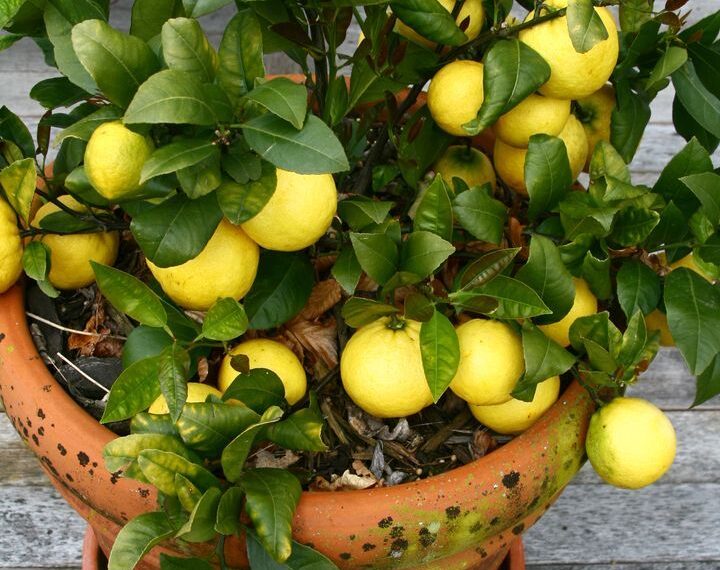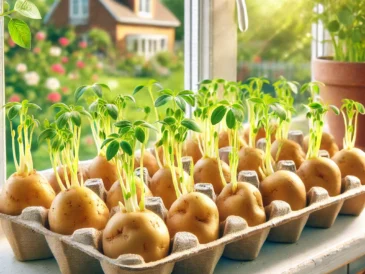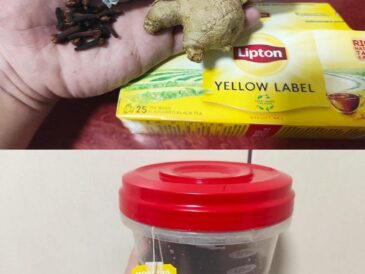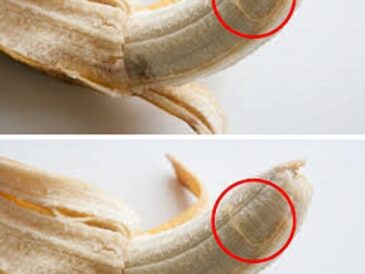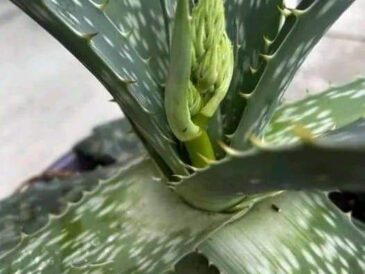8. Pruning and Shaping
Pruning keeps your potted lemon tree compact and encourages healthy growth:
- Timing: Prune in early spring or late fall after the harvest.
- Technique: Remove any dead, damaged, or overcrowded branches. Aim to open up the center of the tree to increase air circulation.
- Shape: Trim the tree into a rounded shape, allowing it to fit comfortably in its container.
9. Repotting for Continued Growth
As the lemon tree matures, it may need to be repotted every 2-3 years:
- New Pot Size: Choose a pot 2-3 inches wider in diameter than the current pot to allow more root space.
- Repotting Process: Carefully transfer the tree to the new pot with fresh soil. Trim any damaged roots during this process.
10. Managing Pests and Diseases
Potted lemon trees are prone to a few common pests and diseases:
- Common Pests: Watch out for aphids, spider mites, and scale insects. Remove them by spraying the tree with insecticidal soap or neem oil.
- Diseases: Root rot can occur if over-watered. Ensure good drainage and monitor soil moisture.
- Regular Checkups: Inspect your tree regularly to catch and treat any issues early.
11. Ensuring Pollination
If your lemon tree is indoors, natural pollination may not occur:
- Hand Pollination: Use a small paintbrush or cotton swab to transfer pollen from one flower to another.
- Encouraging Pollinators: If outdoors, attract bees and other pollinators by planting flowers nearby.
12. Temperature and Climate Needs
Lemon trees are sensitive to cold and should be protected in cooler climates:
- Ideal Temperature: They thrive between 55-85°F. Bring them indoors if temperatures drop below 50°F.
- Indoor Climate: If kept indoors, avoid placing near drafty windows or heating vents.
13. Caring for Flowers and Fruit Development
Flowers and fruits need additional attention to reach maturity:
- Supporting Branches: Heavy fruit can cause branches to sag. Use plant ties to support them if needed.
- Patience: Fruit can take 6-9 months to mature. Ensure the tree is getting consistent light and nutrients.
14. Encouraging Fruit Production
To increase fruit yield, follow these tips:
- Stress Period: Let the soil dry out slightly in late winter, mimicking a dormant period and encouraging spring blooms.
- Gradual Watering: Resume normal watering as new growth appears to stimulate flowering.
15. Harvesting Your Lemons
Knowing when and how to harvest is crucial:
- Maturity Signs: Lemons are ready to pick when they turn fully yellow and feel slightly soft to the touch.
- Harvesting Technique: Use pruning shears to cut the fruit from the tree to avoid damaging the branches.
16. Winter Care and Maintenance
Protecting your potted lemon tree during winter ensures its survival:
- Indoor Transition: If you live in a colder climate, bring the tree indoors when temperatures dip.
- Light and Humidity: Provide as much light as possible and consider using a humidifier to maintain proper humidity levels indoors.
Conclusion
Growing a potted lemon tree that produces fruit is a delightful and achievable project with the right care and attention. By selecting the appropriate variety, potting it in the right soil, and meeting its sunlight, water, and nutritional needs, you can enjoy fresh, homegrown lemons year-round.
Frequently Asked Questions
1. Can a potted lemon tree survive winter indoors?
Yes, as long as it receives ample light and proper humidity, a potted lemon tree can thrive indoors during winter.
2. How often should I water my potted lemon tree?
Water when the top inch of soil is dry. During warmer months, this could mean watering every 3-4 days.
3. How long does it take for a potted lemon tree to bear fruit?
Typically, it takes 3-5 years from planting for a lemon tree to produce fruit, although this varies by variety and growing conditions.
4. What type of fertilizer is best for lemon trees in pots?
A balanced, slow-release citrus fertilizer works well, providing essential nutrients like nitrogen, magnesium, and iron.
5. How can I ensure my lemon tree flowers and produces lemons?
Make sure the tree gets enough sunlight, water, and fertilizer. Hand pollinate indoor trees if natural pollinators aren’t available.
